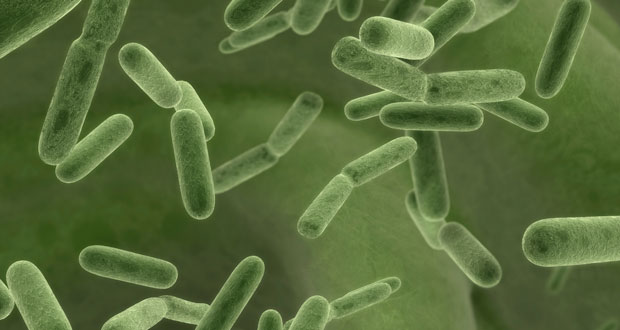Many workplaces have laid dormant for weeks as the Coronavirus has taken hold of the country. This has introduced new challenges, such as the management of legionella
Legionnaires’ disease is a type of pneumonia, which can cause serious respiratory illness and death. It occurs when inhaling fine drops of water, known as aerosols, containing legionella bacteria.
“Testing regimes have been difficult to maintain due to lack of available services and restricted access to closed buildings,” says Darren Holmes, Senior Vice President at risk management firm Marsh. “These conditions could lead to an increase in waterborne pathogens such as legionella bacteria.”
“Aerosols could be circulated by air conditioning units or found around taps and showers where there is a build-up of scale restricting water flow. It is worth highlighting that due to the COVID-19 pandemic, an increased number of people could be more susceptible to Legionnaires’ disease due to a compromised respiratory system during or after infection with COVID-19.”
When buildings reopen in the (hopefully) not-too-distant future, it is essential that water systems are not put back into use without considering the risks of Legionnaires’ disease. According to the Chartered Institute of Environmental Health, there is an increased risk of waterborne pathogens such as legionella bacteria being present as a consequence of the conditions that lockdown may have created.
YOUR LEGAL DUTIES
Duties under the Health and Safety at Work etc. Act 1974 (HSWA) extend to risks from legionella bacteria. The Management of Health and Safety at Work Regulations (MHSWR) provide a broad framework for controlling health and safety at work. More specifically, the Control of Substances Hazardous to Health Regulations 2002 (COSHH) provide a framework of actions designed to assess, prevent or control the risk from bacteria such as legionella and take suitable precautions.
Duty-holders must take reasonably practicable steps to control risk from legionella throughout this time, says Legionella Control, legionella and pathogen control specialists.
They advise that duty-holders implicated in an outbreak of Legionnaires’ disease resulting from actions taken for COVID-19 precautions are not likely to have any exemption from prosecution. The legal responsibility for Legionella control lies with the duty-holder, who must make their own determination for each circumstance.
Darren Holmes adds that you should review your risk assessment and manage the legionella risks when you:
- Reinstate a water system and start using it again; and/or
- Restart some types of air conditioning units.
“Insurers might limit Legionnaire’s coverage amounts or impose higher deductibles if building systems are outdated,” he says. “Insurers may also be stepping up their scrutiny even more due to the Coronavirus pandemic, making it important to follow and implement key steps when considering reopening.”
LOCKDOWN RISK FACTORS AND CONTROL MEASURES
Ideally, changes in legionella risk will have been considered at an early point in planning lockdown arrangements. However, if you have not already done so, you must consider that risk now, particularly if it is foreseeable that buildings and water systems may remain shut down or subject to low usage for several weeks, advises the Chartered Institute of Environmental Health.
Legionella Control adds that it is essential that, when buildings reopen following the lifting of COVID-19 restrictions, any water system is not simply put straight back into use. It advises: “During the period of shut-down it would be sensible to formulate a recommissioning plan for each water system to allow safe start-up and assurance to users that it is safe. Duty-holders are likely to be able to access competent help from service providers remotely during the period of restricted movement. Any plan for recommissioning buildings must take into account the safety of the operatives carrying out the work.”
PREPARING FOR REOPENING
Reopening may not seem very likely in the near future, but it’s important to prepare for when that day does come. If you have already reviewed your risk assessment and implemented additional control measures, it is unlikely you will need to take any further steps prior to reopening. Adds Holmes:
“It is reasonable to assume that where buildings have been unoccupied for a number of weeks there will have been an increase in bacterial growth and as such the system will need to be managed before it is put back into use. Where no additional action has been taken, or you are concerned about the effectiveness of controls implemented, you must take reasonable steps to ensure the safety of the water system prior to reopening.”
Steps to take prior to reopening could include:
- Flushing through simple hot/cold water systems with fresh mains water for several minutes.
- Increasing the temperature of hot water systems to above 60°C if possible and drawing the heated water through to all hot water outlets (a temperature over 60°C will kill Legionella bacteria over time, although can result in a scalding risk. While water should be stored at 60°C, there should be a thermostatic mixing valve before the tap to reduce the temperature to around 43°C).
- Flushing through larger hot/cold water systems (including those with tanks, showers, clarifiers etc.) for a significant period of time.
- Ensuring that the system is capable of delivering water at safe temperatures by checking temperatures ahead of reopening.
- Undertaking a chemical or thermal disinfection of the water system.
- Undertaking microbiological sampling for legionella bacteria.
In conclusion, it’s important to note that each individual water system within a building or workplace is likely to need some degree of individual consideration as no two systems are entirely alike. Additionally, some systems believed  to be under good control may now show that previous high levels of use and turnover have masked existing issues; these could become apparent during periods of low use.
to be under good control may now show that previous high levels of use and turnover have masked existing issues; these could become apparent during periods of low use.





